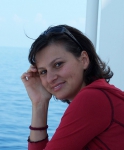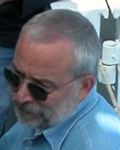University of Milan-Bicocca
The marine geology and paleontology team of the Milano-Bicocca University carries out multidisciplinary marine research on both coastal and offshore environments.In recent years special attention has been focused on shallow- and deep-water carbonate build-ups from the Mediterranean, the Red Sea and the Indian Ocean.
Mediterranean Sea
Cold-water corals (CWC): An extensive study of the Santa Maria di Leuca (SML) Cold-Water Coral Province (Ionian Sea) has been carried out in the framework of national and international (
FP7 CoralFISH) scientific programmes. This area represents the largest occurrence of live CWC community so far known in the Mediterranean and can be considered as a key study for this basin. Our research focuses on (1) the relationships between the current spatial distribution of the SML coral communities and the local environmental variables (e.g., oceanographic, physiographic, sedimentological features) and (2) the trigger factors which have induced the SML coral mound initiation and affected their alternating growth and decline phases through time.
The frame-building potential of Mediterranean cold-water corals has been explored by paleontological studies (taxonomy, taphonomy, paleoecology) and facies analyses on Neogene to Pleistocene deposits cropping out in several areas of the Mediterranean (e.g. Messina Straits).
Cool-water calcareous algal accumulations and build-ups: We investigate the factors inducing the inception, growth and demise of Mediterranean algal build-ups in the present, and their fossil counterparts. Particular attention is paid to the change in substrate texture and benthic associations, from the appearance of rhodoliths to the complete substrate stabilization by encrusting coralline algae, and the implications in sedimentology, geomorphology and benthic ecology.
Red Sea and Indian Ocean
Warm-water calcareous microbialites, biogenic mounds, and frameworks are investigated with the aim to explore their occurrence and relationship with major abiotic environmental variables and biotic factors, as a model for the interpretation of the fossil record. The research is also focused on the effects of the global change (sea-level rise, marine acidification) on the biogenic carbonate production, the sediment budget and thus on the survival of low-lying atolls of Maldives.
Team expertise
- Systematics, ecology and paleoecology of benthic communities with emphasis on bioconstruction and chemosynthesis-sustained communities (corals, coralline algae, mollusks)
- Marine geomorphology and seafloor mapping
- Habitat mapping
- Biomineralization processes and paleoceanographic proxies
- Phytoplankton distribution and fluxes, paleoceanographic and paleoclimatic reconstructions through coccolithophore-based proxies and nannofossil biostratigraphy.
Current projects
- COCONET: A COast to COast NETwork of protected areas: from the shore to the deep sea. EU VII FP – Ocean 2011. Under negotiation.
- CORALFISH: Ecosystem based management of corals, fish and fisheries in the deep waters of Europe and beyond http://eu-fp7-coralfish.net/
- MAGIC: An integrated research project for acquiring high-resolution morphobathymetry and producing geohazard maps of the continental margins of Italy http://www.magicproject.it
- MedSeA: Mediterranean Sea Acidification in a changing climate http://medsea-project.eu
- FAR 2010 Research funds from the University of Milano-Bicocca
Facilities
The team benefits from the
facilities of the Department of Geological Sciences and Geotechnologies of the Milano-Bicocca University and is in charge of the laboratories of marine geology, marine cartography, micropaleontology and paleobiology. Furthermore, we setup a laboratory for the study of coralline algal growth, that has been recently equipped as a cold-water aquarium for deep Mediterranean scleractinian corals.
The marine geology team is involved in the activities of the
Milano-Bicocca University Centre for Higher Education and Researchon the island of Magoodhoo in the Faafu Atoll, Republic of Maldives. The Milano-Bicocca marine geology team is part of CoNISMa, the National University Consortium for Marine Sciences (ESF Marine Board).
People
|
|

|

|

|
Prof. Dr.
Cesare Corselli
|
|
Prof. Dr.
Elisa Malinverno
|
Prof. Dr.
Alessandra Savini
|
|

|

|
|
|
|
Dr.
Agostina Vertino
|
|
|
|
Related Publications:
2011
Basso D. & Granier B. (Editors), in press. Calcareous algae and the global change: from identification to quantification. Geodiversitas, spec. vol. 2012
Savini A., Basso D., Bracchi V.A., Corselli C., Pennetta M., in press. Maërl bed mapping and carbonate quantification on submerged terraces offshore the Cilento Peninsula (Tyrrhenian Sea, Italy). Geodiversitas. spec. vol.
Basso D., Rodondi G. & Bressan G. (2011). A re-description of Lithothamnion crispatum and the status of Lithothamnion superpositum (Rhodophyta, Corallinales). Phycologia 50 (2), 144–155.
Benzoni F., Basso D., Caragnano A. & Rodondi G. (2011). Hydrolithon spp. (Rhodophyta, Corallinales) overgrow live corals (Cnidaria, Scleractinia) in Yemen. Marine Biology, DOI:10.1007/s00227-011-1743-2.
Savini A., Corselli C., Durmishi C., Marku S., Morelli D., Tessarolo C. (2011). Geomorphology of the Vlora Gulf Seafloor: Results from Multibeam and High Resolution Seismic Data. Journal of Coastal Research, SI 58, 6-16.
Taviani M, Vertino A, Savini A, Remia A, Lopez Correa M, Montagna P., De Mol B, Angeletti L., Zibrowius H., Salomidi M., Ritt B., Henry P (2011). Pleistocene to Recent deep-water corals in the eastern Mediterranean. Facies doi:10.1007/s10347-010-0247-8.
2010
Corselli C (Editor) (2010). The APLABES Programme: Physical, Chemical and Biological Characterization of Deep-Water Coral Ecosystems from the Ionian Sea (Mediterranean)Deep Sea Research II, 57: 323-492
Corselli C (2010). Introduction: Cold-Water Coral communities in the Mediterranean Sea. Deep-Sea Research II, 57: 323-325
Malinverno E, Taviani M, Rosso A, Violanti D, Villa I, Savini A, Vertino A, Remia A, Corselli C (2010). Stratigraphic framework of the Apulian deep-water coral province, Ionian Sea. Deep-Sea Research II, 57: 345-359
Rosso A, Vertino A, Di Geronimo I, Sanfilippo R, Sciuto F, Di Geronimo R, Violanti D, Corselli C, Taviani M, Mastrotaro F, Tursi A.. (2010). Hard- and soft-bottom thanatofacies from the Santa Maria di Leuca deep-water coral province, Mediterranean. Deep-Sea Research II, 57: 360-379
Savini A and Corselli C (2010). High-resolution bathymetry and acoustic geophysical data from SantaMaria di Leuca Cold Water Coral province (Northern Ionian Sea - Apulian continental slope). Deep-Sea Research II, 57: 326-344
Vertino A, Savini A, Rosso A., Di Geronimo I., Mastrotaro F., Sanfilippo R., Gay G., Etiope G. (2010). Benthic habitat characterization and distribution from two representative sites of the deep-water SML Coral Province (Mediterranean). Deep-Sea Research II, 57: 380-396
Vertino A, Zibrowius H, Rocca M, Taviani M (2010) Fossil Coralliidae in the Mediterranean basin. In: Bussoletti, E., D. Cottingham, A. Bruckner, G. Roberts, and R. Sandulli (editors). Proceedings of the International Workshop on Red Coral Science, Management, and Trade: Lessons from the Mediterranean. NOAA Technical Memorandum CRCP-13, Silver Spring: 94-98
2009
Basso D., Nalin R., Nelson C.S. (2009). Shallow-water Sporolithon rhodoliths from North Island (New Zealand). Palaios, 24 (2-3): 92-103.
Caragnano A., Colombo F., Rodondi G., Basso D. (2009). 3-D distribution of nongeniculate Corallinales: a case study from a reef crest of South Sinai (Red Sea, Egypt). Coral Reefs, DOI 10.1007/s00338-009-0524-6.
Wienberg C, Hebbeln D, Fink H G, Mienis F, Dorschel B, Vertino A, Correa M L, Freiwald A. (2009). Scleractinian cold-water corals in the Gulf of Cadiz - First clues about their spatial and temporal distribution. Deep-Sea Research I., 57: 1873-1893.
2008
Vannucci G., Quaranta F., Basso D. (2008). Revision and re-documentation of M. Airoldi’s species of Lithophyllum from the Tertiary Piedmont Basin. Riv. It. Paleont. Strat., 114 (3): 515-528.
2007
Basso D., Nalin R., Massari F. (2007). Genesis and composition of the Pleistocene “Coralligene de plateau” of Cutro terrace (Calabria, southern Italy). Neues Jahrbuch für Geologie und Palaeontologie Abh., 244/2: 173-182.
Beuck L, Vertino A, Stepina E, Karolczak M and Pfannkuche O. (2007). Skeletal response of Lophelia pertusa (Scleractinia) to bioeroding sponge infestation visualised with micro-computed tomography. Facies, 53-2: 157-176
Nalin R., Nelson C.S., Basso D. & Massari F. (2007). Rhodolith-bearing limestones as transgressive marker beds: Fossil and modern examples from North Island, New Zealand. Sedimentology, 55: 249-274.
Stolarski J and Vertino A (2007). First Mesozoic record of the scleractinian Madrepora from the Maastrichtian siliceous limestones of Poland. Facies, 53-1: 67-78
2006
Basso D. & Rodondi G. (2006). A Mediterranean population of Spongites fruticulosus (Rhodophyta, Corallinales), the type species of Spongites, and the taxonomic status of S. stalactitica and S. racemosa. Phycologia 45: 403-416.
Nalin R., Basso D. & Massari F. (2006). Pleistocene coralline algal build-ups (coralligène de plateau) and associated bioclastic deposits in the sedimentary cover of Cutro marine terrace (Calabria, Southern Italy). In: M. Pedley, G. Carannante (Eds.) Cool-water carbonates: Depositional Systems and Palaeonvironmental Controls, Geological Society of London. Special Publication, 255: 11-22.
2005
Di Geronimo I, Messina C, Rosso A, Sanfilippo R, Sciuto F, Vertino A (2005). Enhanced biodiversity in the deep: Early Pleistocene coral communities from southern Italy. In: Freiwald A, Roberts JM (eds), Cold-water Corals and Ecosystems. Springer-Verlag Berlin Heidelberg: 61-86.





